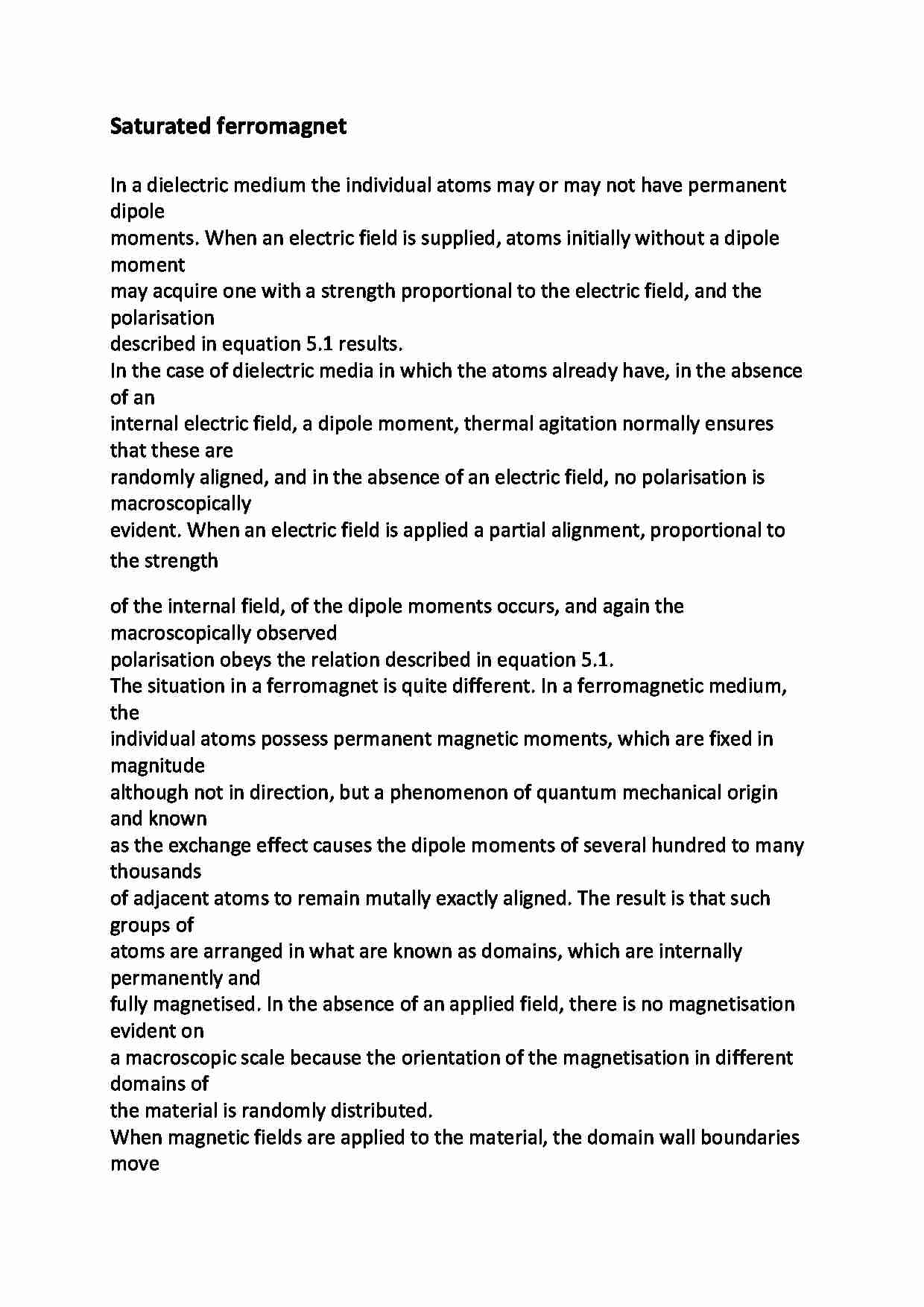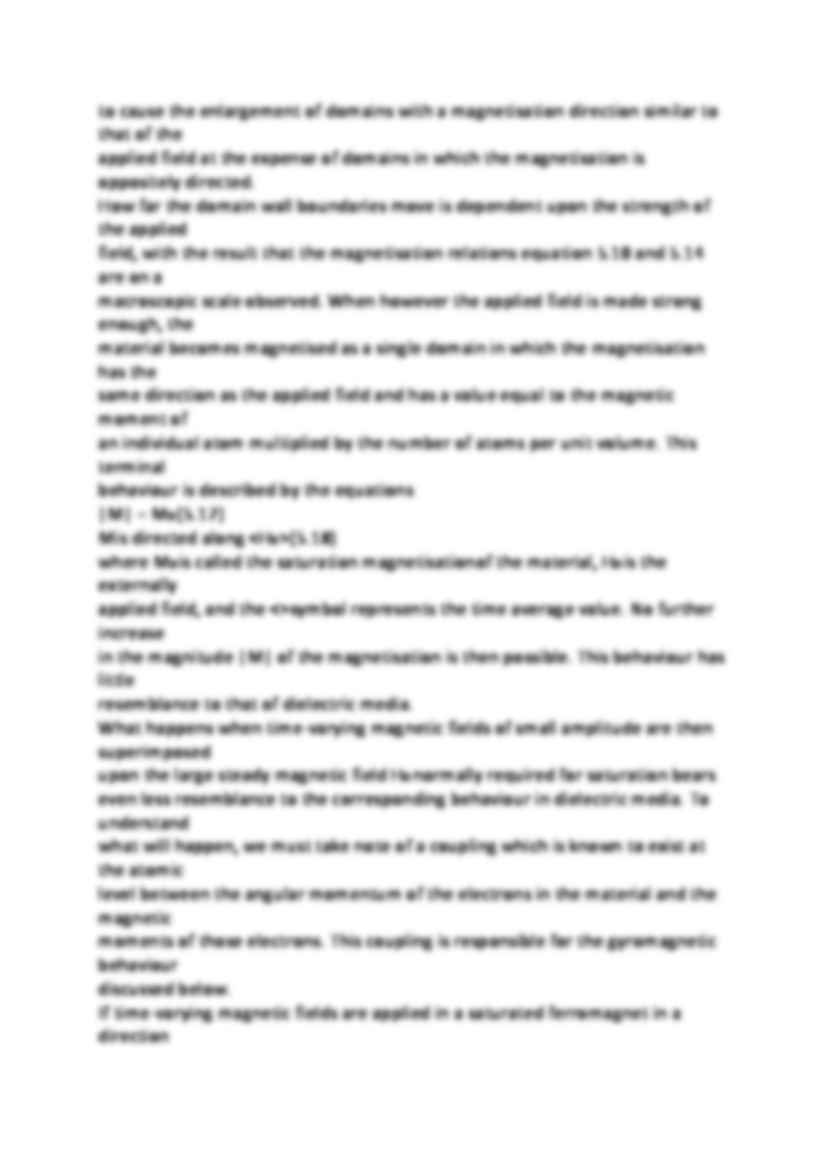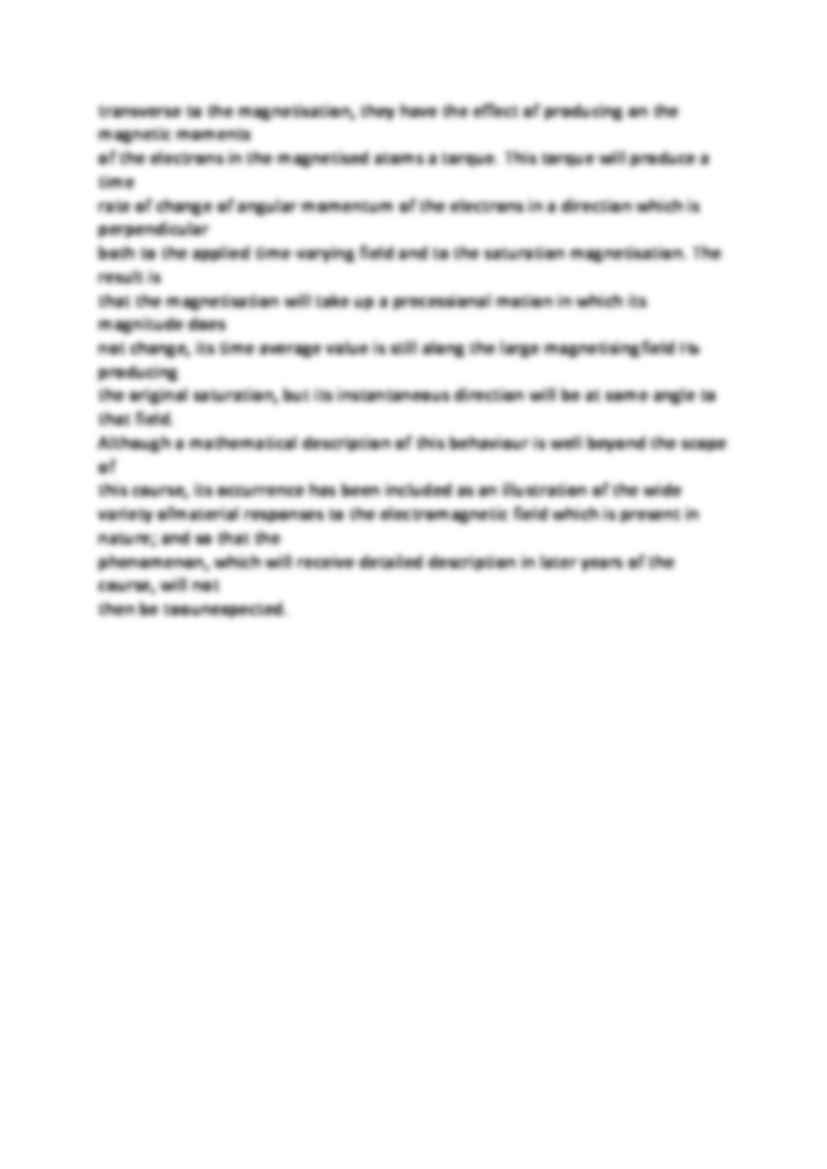To tylko jedna z 3 stron tej notatki. Zaloguj się aby zobaczyć ten dokument.
Zobacz
całą notatkę



Saturated ferromagnet In a dielectric medium the individual atoms may or may not have permanent dipole
moments. When an electric field is supplied, atoms initially without a dipole moment
may acquire one with a strength proportional to the electric field, and the polarisation
described in equation 5.1 results.
In the case of dielectric media in which the atoms already have, in the absence of an
internal electric field, a dipole moment, thermal agitation normally ensures that these are
randomly aligned, and in the absence of an electric field, no polarisation is macroscopically
evident. When an electric field is applied a partial alignment, proportional to the strength
of the internal field, of the dipole moments occurs, and again the macroscopically observed
polarisation obeys the relation described in equation 5.1.
The situation in a ferromagnet is quite different. In a ferromagnetic medium, the
individual atoms possess permanent magnetic moments, which are fixed in magnitude
although not in direction, but a phenomenon of quantum mechanical origin and known
as the exchange effect causes the dipole moments of several hundred to many thousands
of adjacent atoms to remain mutally exactly aligned. The result is that such groups of
atoms are arranged in what are known as domains, which are internally permanently and
fully magnetised. In the absence of an applied field, there is no magnetisation evident on
a macroscopic scale because the orientation of the magnetisation in different domains of
the material is randomly distributed.
When magnetic fields are applied to the material, the domain wall boundaries move
to cause the enlargement of domains with a magnetisation direction similar to that of the
applied field at the expense of domains in which the magnetisation is oppositely directed.
How far the domain wall boundaries move is dependent upon the strength of the applied
field, with the result that the magnetisation relations equation 5.10 and 5.14 are on a
macroscopic scale observed. When however the applied field is made strong enough, the
material becomes magnetised as a single domain in which the magnetisation has the
same direction as the applied field and has a value equal to the magnetic moment of
an individual atom multiplied by the number of atoms per unit volume. This terminal
behaviour is described by the equations
|M| = M0 (5.17)
Mis directed along (5.18)
where M0 is called the saturation magnetisation of the material, H0 is the externally
applied field, and the symbol represents the time average value. No further increase
in the magnitude |M| of the magnetisation is then possible. This behaviour has little
... zobacz całą notatkę






Komentarze użytkowników (0)